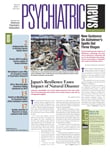It is typical of most new technologies that the younger generation is quick to adopt them. Social media started out with such sites as Facebook, Friendster, Flickr, and LinkedIn, to name a few. At that time, the utility and growing popularity of these sites had not taken root, since Facebook was restricted only to university students, and professional social networking was a novelty. These social media sites hit their stride when a critical mass of users drew more users to join, much like a popular restaurant where diners are willing to wait hours for a table, and then tell their friends that they just have to eat there.
In the spirit of the wild, wild Web, the behavior of the younger generation has been to adapt quickly to uses of new technology, whereas the older generation has taken a more cautious and conservative approach, wading in slowly. There are now more than 100 million members on LinkedIn, while Facebook has more than 500 million active users. Both groups have much to learn and gain from one another in this "brave new world."
Social media sites such as Friendster and Facebook have been primarily used for personal purposes, leaving the professional arena to sites such as LinkedIn. Many undergraduates, medical students, resident physicians, and practicing psychiatrists have personal Facebook pages, posting pictures and sharing comments about their day or something of personal interest.
On LinkedIn, many psychiatrists have created a profile, with data populated from their curriculum vitae such as training information and publications, to create new business connections. Recently, there has been some convergence in function of the two major social networking sites. LinkedIn has incorporated more social and personal information with updates and groups, whereas Facebook is being used more for organizational information and professional marketing. APA, the American Academy of Child and Adolescent Psychiatry, and PsychiatryOnline have Facebook pages to promote their organizations, while on LinkedIn, members are posting more updates using Twitter feeds and following posts about groups and individuals. Some psychiatrists are beginning to use their Facebook page to promote their practice as well.
Many unforeseen issues have come up concerning the uses of social media. Patients often find their psychiatrists on these sites, and many have contacted them to be "connected." The vast majority of psychiatrists find this to be a boundary issue, which impacts privacy for both patient and practitioner. It also impacts clinical care with transference difficulties as well as the potential "push" of information with treatment ramifications.
I recommend having a discussion in person with the patient regarding the reasons why he/she chose to connect, and then educating the patient on the many reasons why you advise against such a connection. The face-to-face discussion is important because a virtual "rejection" often presents no opportunity for exploration and explanation and likely will fuel feelings of abandonment, perhaps jeopardizing the patient-physician relationship.
Appropriate use of social media has become an important issue with the ease of posting comments or thoughts. The younger generation may not give too much thought before writing a complaint about a patient or bad day at the office; however, they forget that such comments may not be appropriate for all of their connections. It is often too difficult on these social media sites to manage all of the communication and privacy settings to ensure that posts about a night out partying go only to the desired people.
Even if one realizes that a post may have been unprofessional, it is often too late to retract it, given the viral nature of the Internet, which spreads information beyond anticipated locales. In particular, people search engines such as
Zabasearch.com and
Pipl.com target social media sites such as Facebook, Amazon, Flickr, and LinkedIn to collect information. While an individual site may not divulge too much personal information, the aggregate of all this information may reveal more about them than people realize.
In a related vein, the older generation is often slow to use social media, concerned about these very risks of boundaries and privacy in new technology. For example, some psychiatrists maintain that e-mail for communication with patients is fraught with risk, and therefore they would never use e-mail for this purpose. However, they fail to recognize that today's patients may actually be willing to accept the risk of potential breach of privacy in exchange for expedience of communication. Professional guidelines such as the AMA Policy on Professionalism in the Use of Social Media (
www.ama-assn.org/ama/pub/meeting/professionalism-social-media.shtml) help reframe how to reap the benefits of social media yet maintain appropriate professional perspective.
Footnotes
John Luo, M.D., is an associate clinical professor of psychiatry and associate director of psychiatric residency training at the UCLA Semel Institute for Neuroscience and Human Behavior and a past president of the American Association for Technology in Psychiatry.

